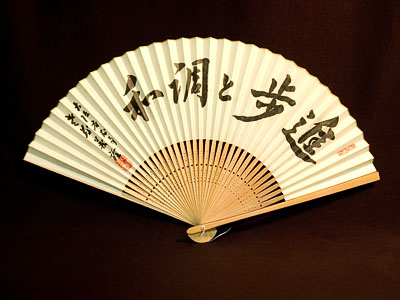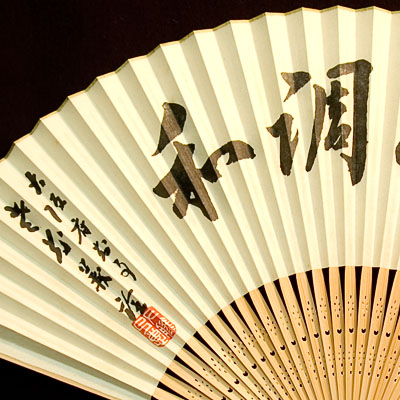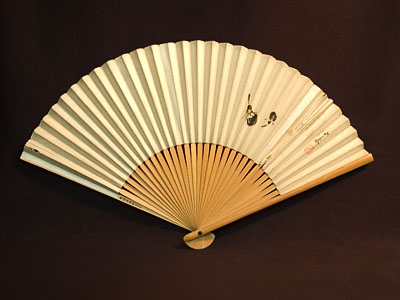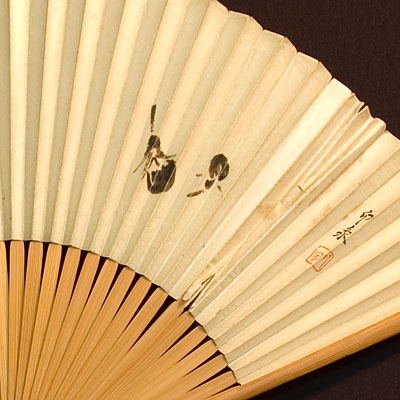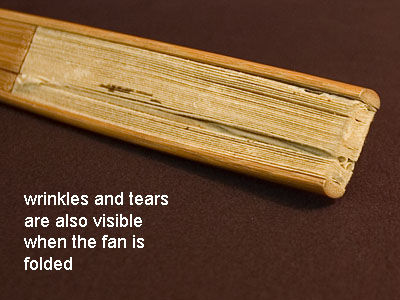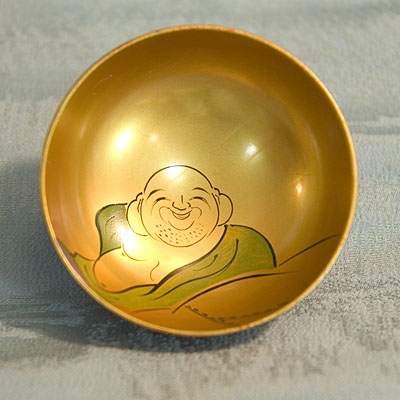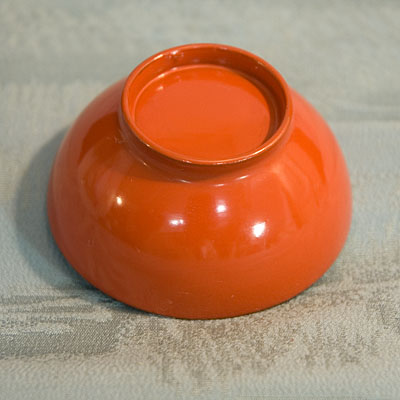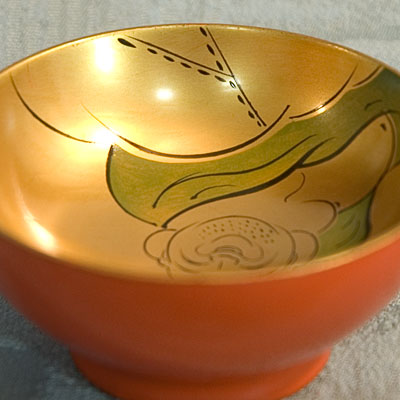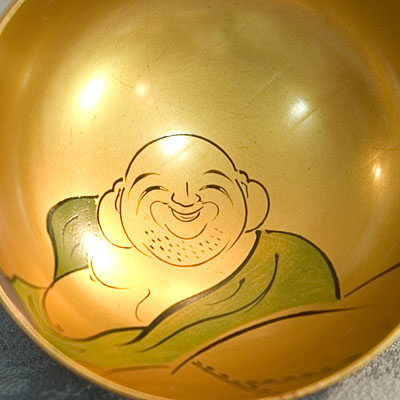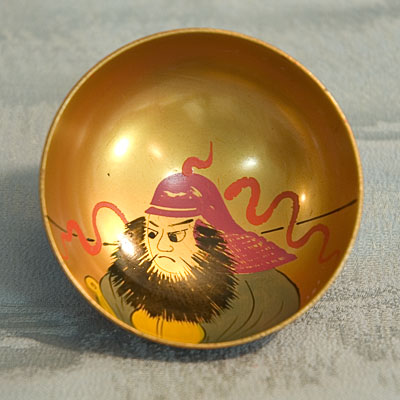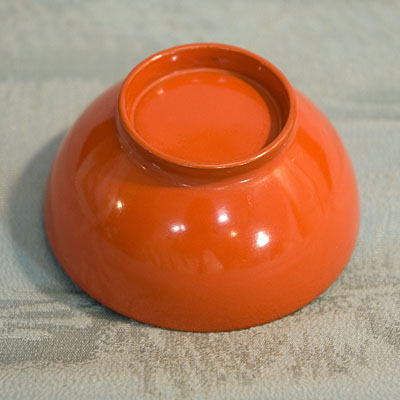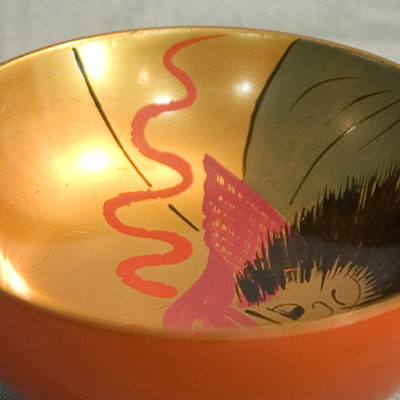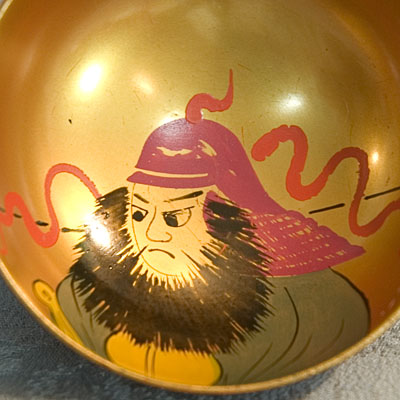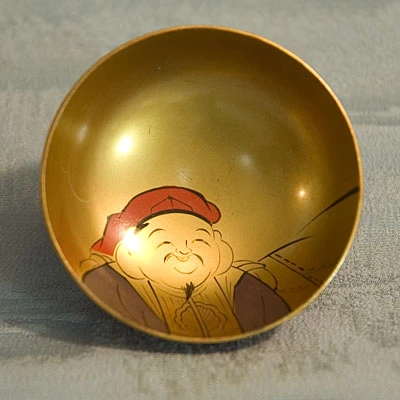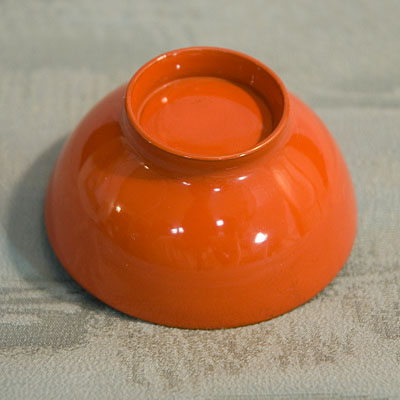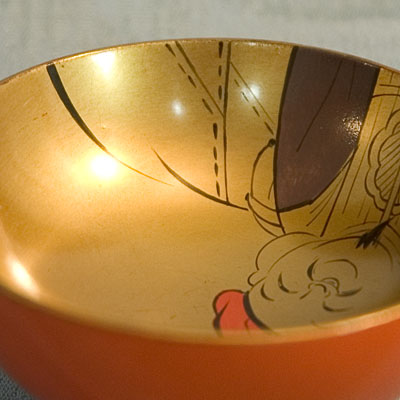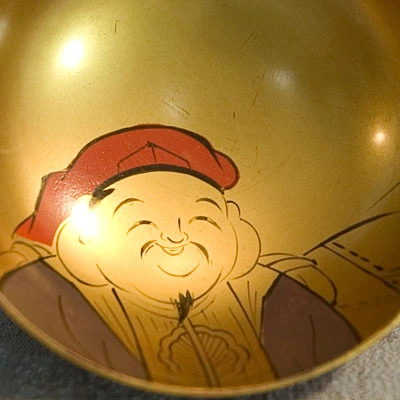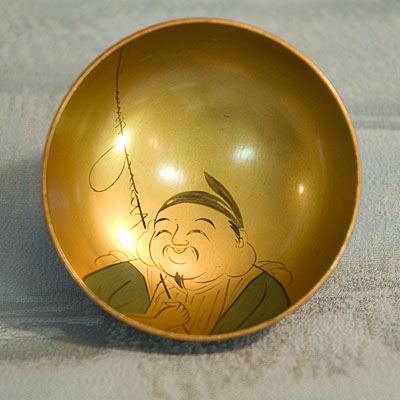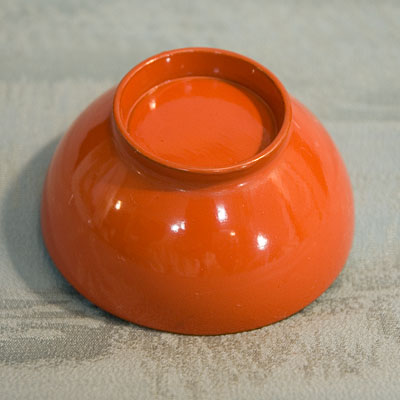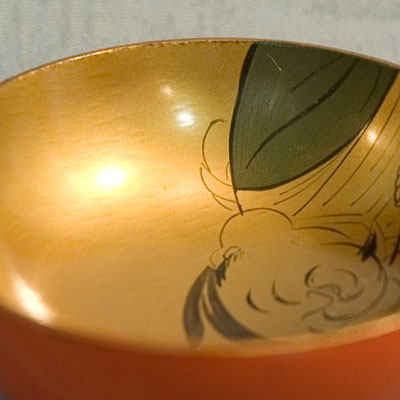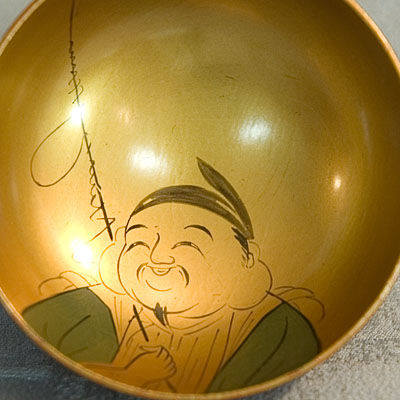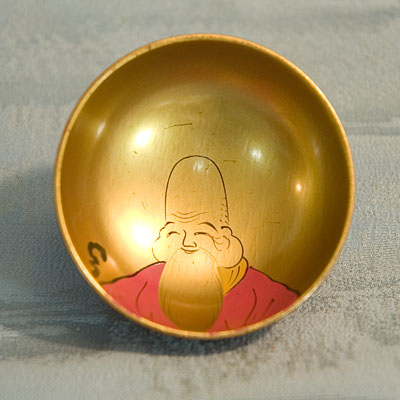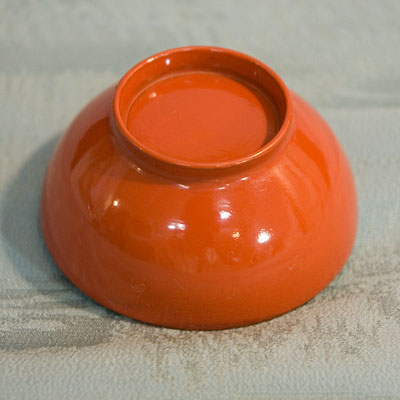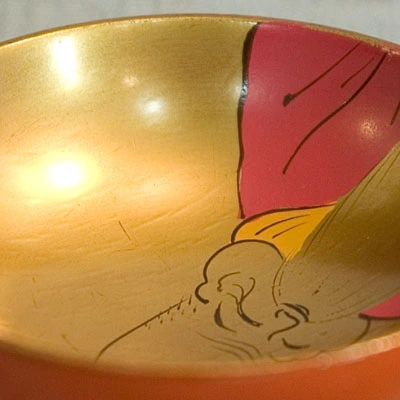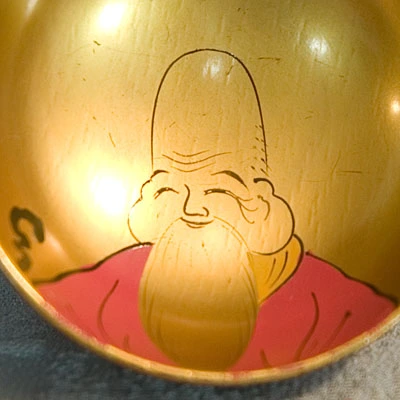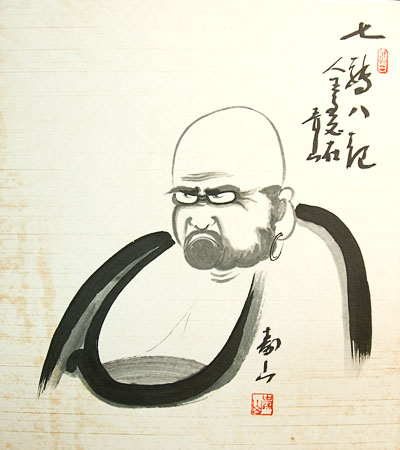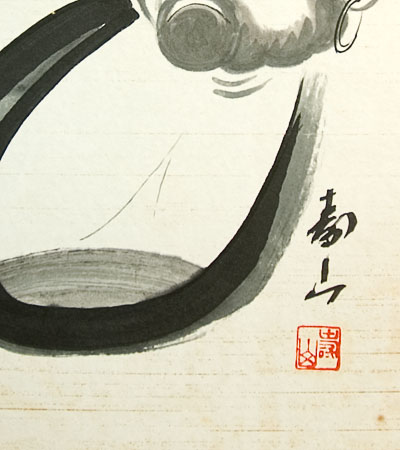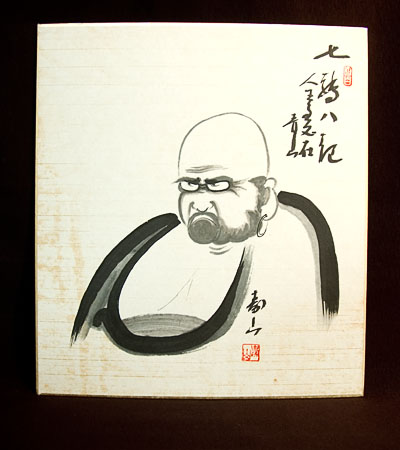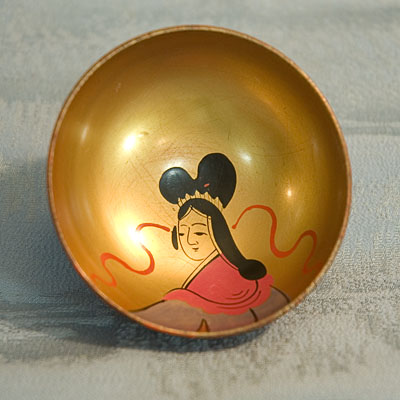
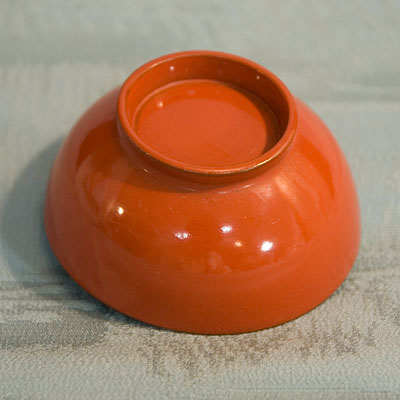
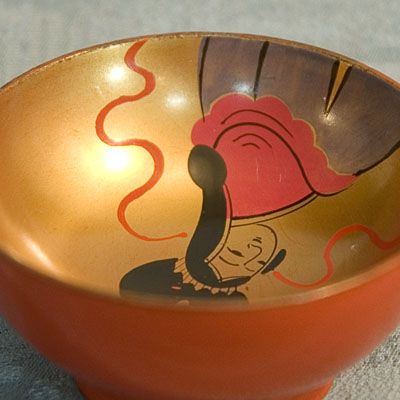
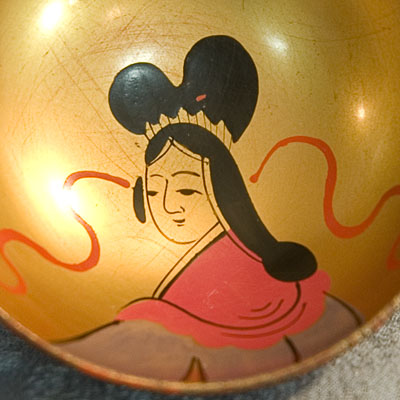


Description
This splendid high quality wood and lacquer sake cup (guinomi in Japanese) features a hand-painted image of the Japanese Shinto luck god Benzaiten. This god is a member of the group of seven luck gods called Shichifukujin. This sake cup was made during the mid to late Japanese Showa period (1926-1989) and is in very good condition with no chips, cracks or large scratches and only small marks from handling and use. The cup was acquired in the beautiful and historic city of Shizuoka, Japan near the foot of Mt. Fuji. Click here to see more sake cups!
In Japanese folklore the Shichifukujin are the seven gods of wealth, happiness and longevity. These famous gods (six male and one female) are frequently seen together in Japanese art, often in a boat sailing the seas of fortune. However, the individual gods actually hail from a variety of religious faiths including Buddhism and Taoism as well as Japan’s native religion of Shinto. The gods are:
- Ebisu – Ebisu is Japan’s god of fisherman and the morning sun. Ebisu is also sometimes regarded as the protector of small children, a role he shares with the Buddhist deity Jizo. Ebisu is also the only member of the Shichifukujin seven who is of Japanese origin.
- Daikokuten – Daikoku is the god of wealth, food and worldly success; and statues of this happy deity have for centuries been common fixtures of Japanese homes, particularly kitchens. Daikoku is also reputed to be Ebisu’s father.
- Fukurokujin – Originating in Chinese Taoism this god is the symbol of wealth, happiness and longevity and is usually seen carrying a long staff or cane.
- Hoteison – A plump Zen Buddhist monk from China, usually seen with a bag in one hand and a fan in the other.
- Jurojin – The Taoist god of long life. This god is also usually seen carrying a staff in his hand.
- Benzaiten – The only female of the bunch. This goddess is from India and is the patron of music and culture. She is usually seen carrying an old fashioned Japanese biwa (a type of lute).
- Bishamonten – The warrior of the bunch. This god is originally from India and is charged with protecting people and their treasure. Bishamonten is usually depicted wearing armor.
Size:
Height: 1.0 inches (2.5 centimeters)
Diameter: 2.1 inches (5.5 centimeters)
Weight: 0.3 ounces (8 grams)
Click here to see additional sake items!
Click here to see other Shichifukujin items!
Click here to see more fine-quality Japanese ceramics!
Click here to see additional treasures from Japan!
More about Japanese sake and sake utensils
Sake has long been an important part of Japanese culture. In the past, sake was considered a very special item, reserved for only the most important occasions, such as weddings, birth celebrations and other auspicious events. Sake was considered a sacred drink, and accordingly the first glass poured was always offered to the gods before the remainder could be shared among the celebrants. Sake can be served either warm or cold and special sake flasks are used to both prepare and dispense this unique Japanese drink. Sake is warmed either by immersing the flask (already filled with sake of course) into warm water until the desired temperature is reached or through the use of a special sake kettle called a choshi. The latter method however, though common in old Japan, is today usually reserved for ceremonial events only. Over time, sake utensils, such as cups have developed their own ritual significance which is still evident in modern Japan. For example, it is today common at Japanese engagement parties for the man and woman to exchange sake cups as a sign of their mutual intent to marry. Very beautiful sake cups are also given away to celebrate the birth of a child, as these cherished items are considered symbolic of the significance of the new parent-child relationship. Though normally small in size, sake cups and flasks have long been used in Japan as a medium for the expression of art and calligraphy. Hand-painted cups and flasks are highly collectable both within and outside Japan and are eagerly sought after by collectors who value their utilitarian nature and artistic splendor.
item code: R3S6B1R11-0004435
category code: SAKECUP
ship code: L1650
Leave a Comment
Posted in Antique, Benzaiten, Craft, Gods, Japan, Japanese, Kurt Bell, Mingei, Nihon, Nippon, Old, Religion, Sake, Shinto, Showa, Softypapa, The Old Tokaido, Tokaido, Vintage | Tags: Cup, Guinomi, Japan, Japanese, Nihon, Nippon, Sake, Sake Cup, Softypapa, Tokaido
